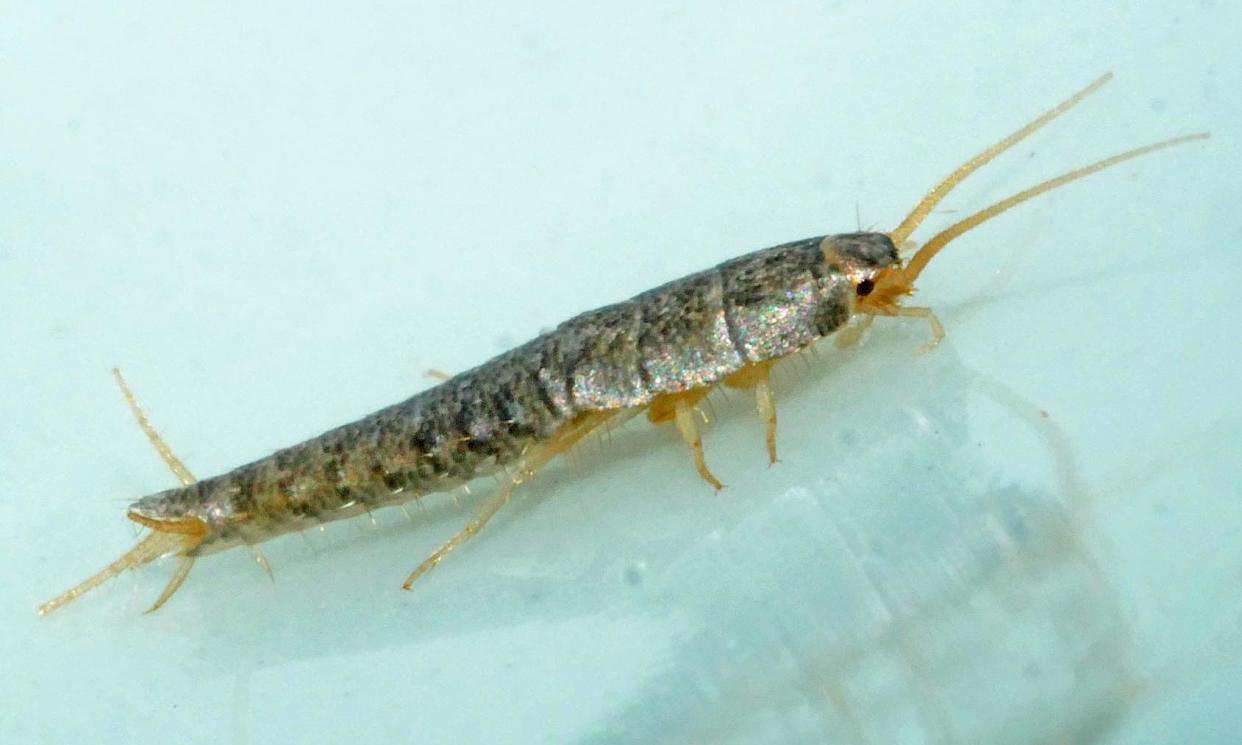Country diary: A kitchen ‘pest’ that predates dinosaurs

I was in the kitchen about to cut up a drumhead cabbage when I noticed an unusually lustrous bead of water rolling down the side of the violet-hued brassica. There was something strange about the way the droplet moved, but it wasn’t until it slipped off and began shimmering across the chopping board that I realised it was a silverfish.
These primitive, wingless insects belong to the order Zygentoma, an ancient group with a lineage that dates back more than 400m years, long before dinosaurs roamed the Earth. The fact that they have remained virtually unchanged but now thrive in human dwellings is a testament to their adaptability and resilience.
I first encountered a silverfish aged about five, in the cool, dark sanctuary of my grandmother’s pantry. I remember turning on the light and sending the alien-looking creature running for cover among the jars of homemade jam, bags of flour and baked goods.
Favouring damp areas with high humidity, they’re most at home in kitchens and bathrooms, but are probably best known for being the scourge of libraries. Google them and up pop adverts for pest-control services giving grave warnings about their ability to destroy property. Granted, with a penchant for consuming starchy paper, wood, fabric and glue, they can cause serious degradation to books, archival documents, wallpaper, upholstery and clothing if present in large numbers. However, they also feed on food crumbs, dust, dandruff and their kin’s moulted skins and corpses, and have a slow reproduction rate, so in most homes their presence goes undetected.
When the silverfish paused, I grabbed my hand lens from the windowsill and examined its slightly flattened, elongated teardrop-shaped body. Magnified, the scales forming its carapace had the dinted appearance of hammered pewter. In addition to two antennae – used to navigate dark crevices – it sported a trio of long posterior filaments that dragged along to analyse the substrate. Before I could absorb any more detail, the creature was off again. Propelled by three pairs of translucent legs, its swift, undulating movement across the granite countertop created the impression of a tiny silver fish swimming through a stormy grey sea.
• Country diary is on Twitter at @gdncountrydiary

 Yahoo News
Yahoo News 
